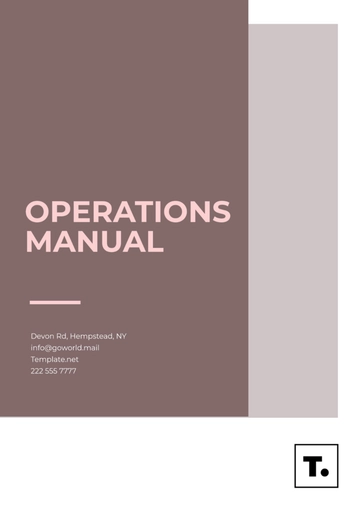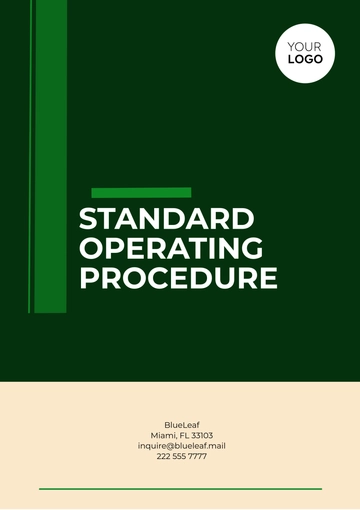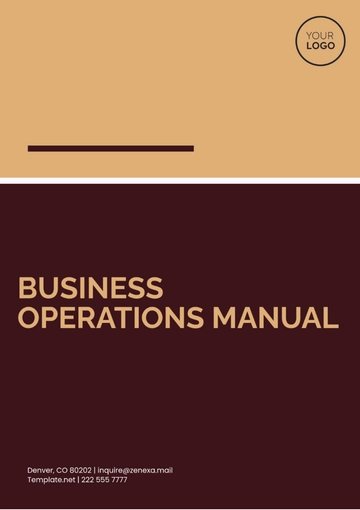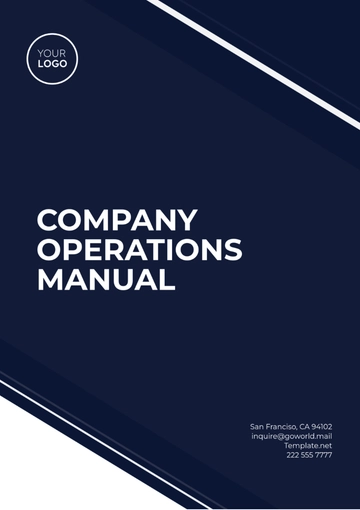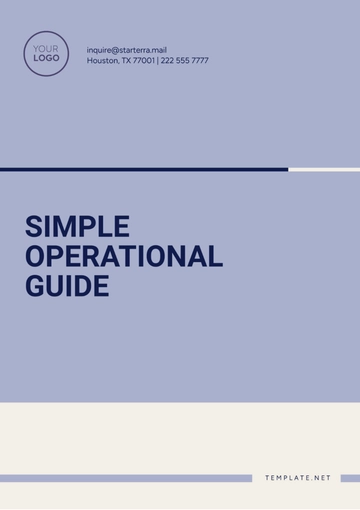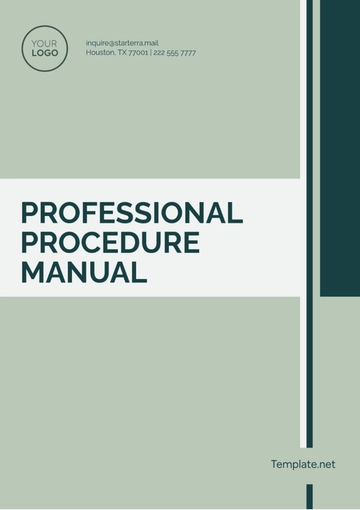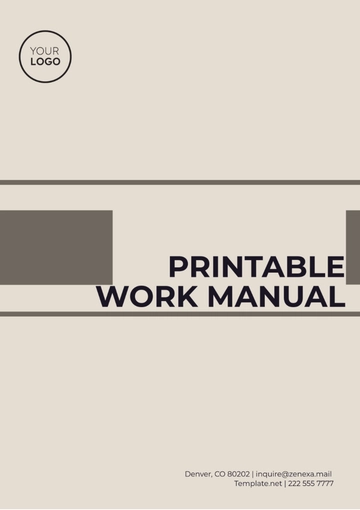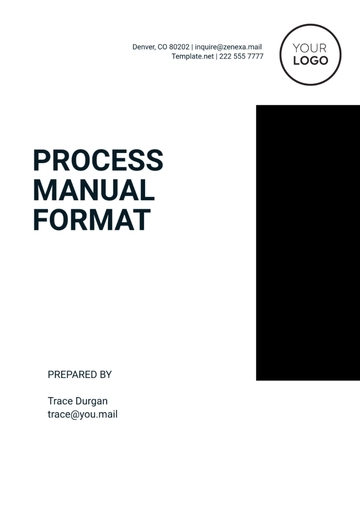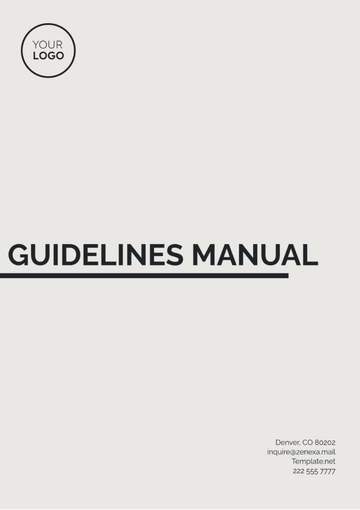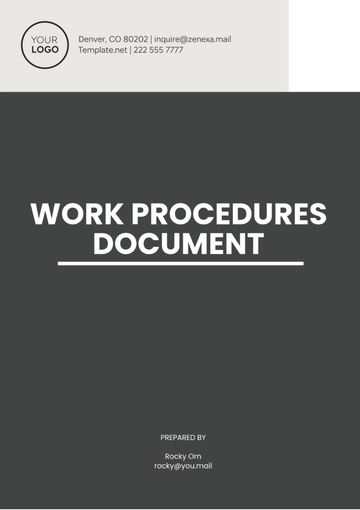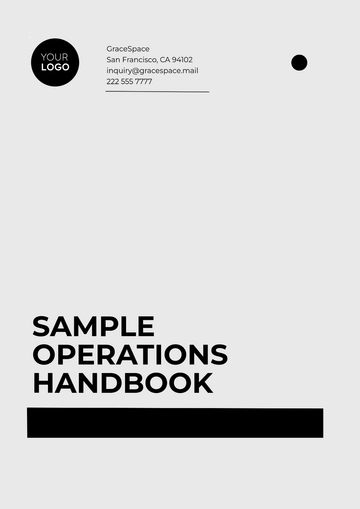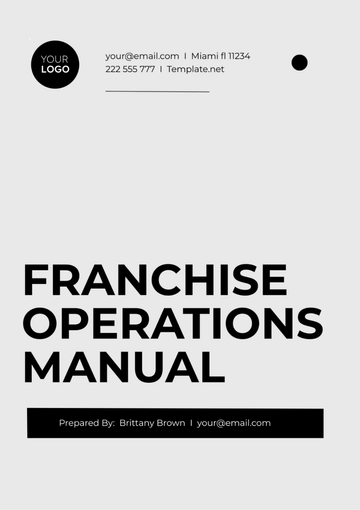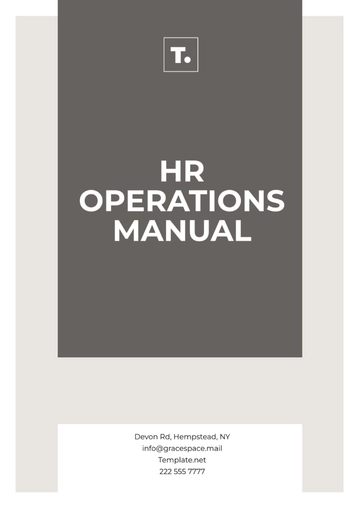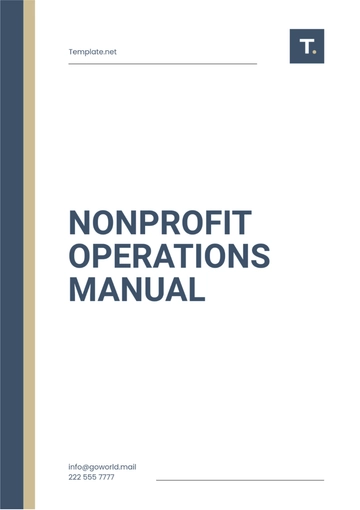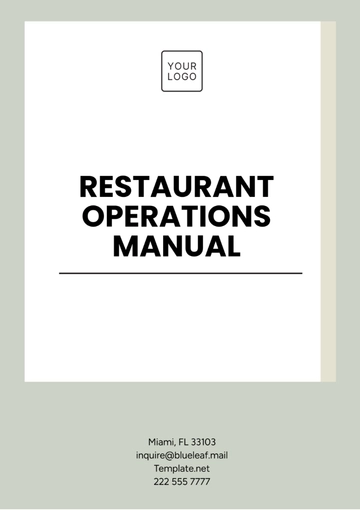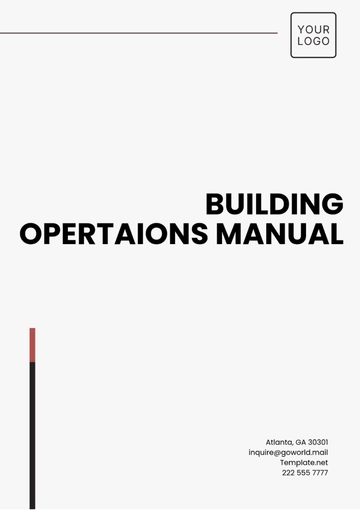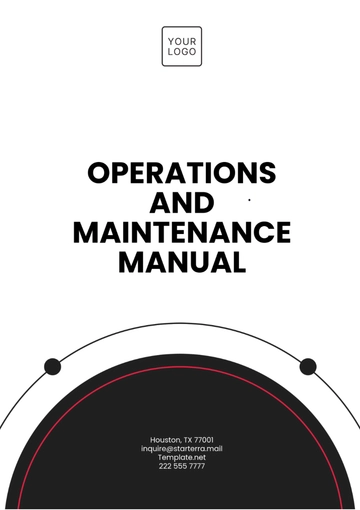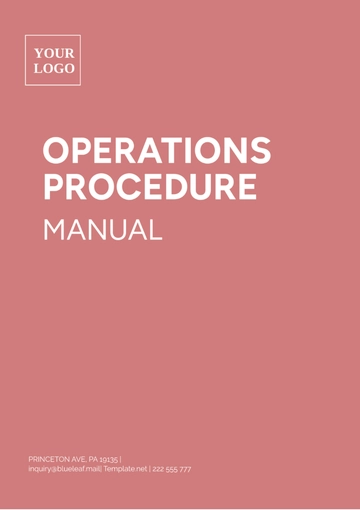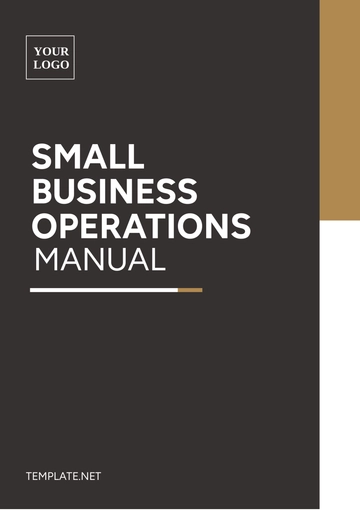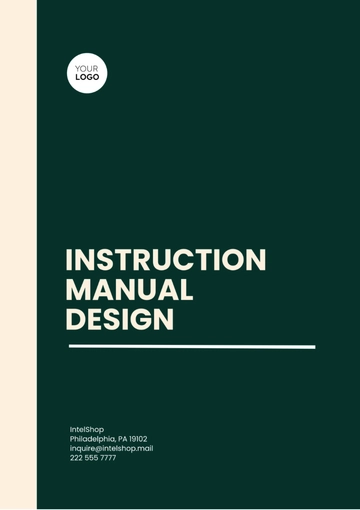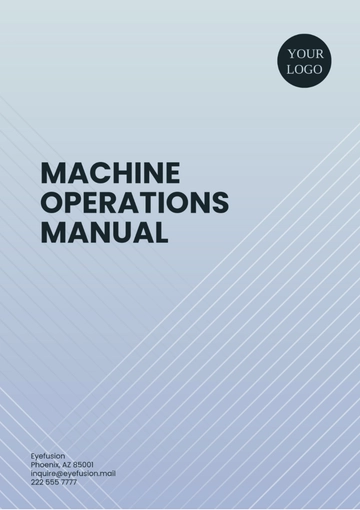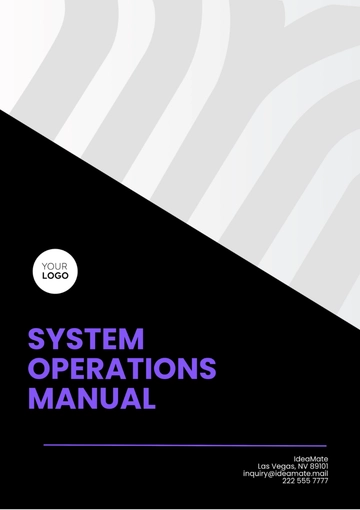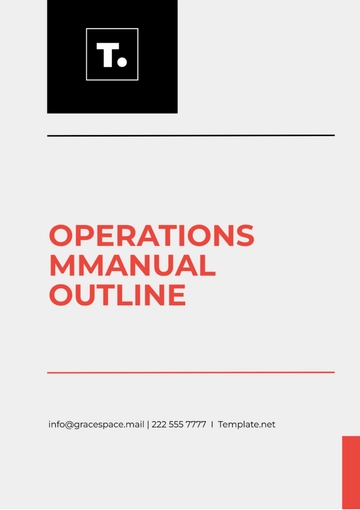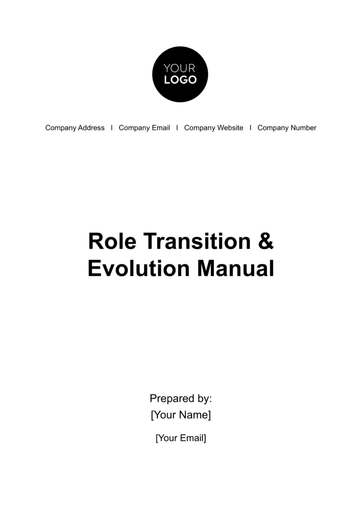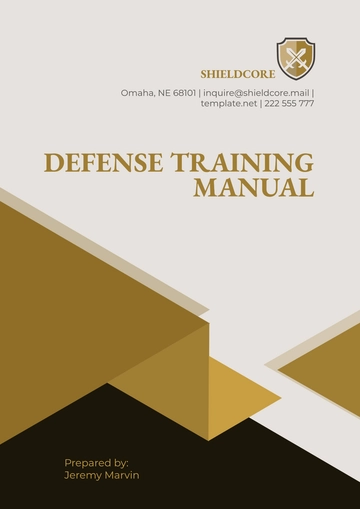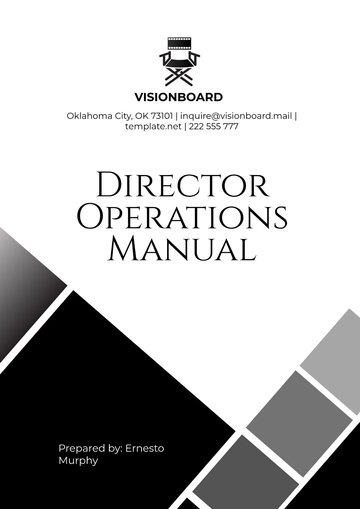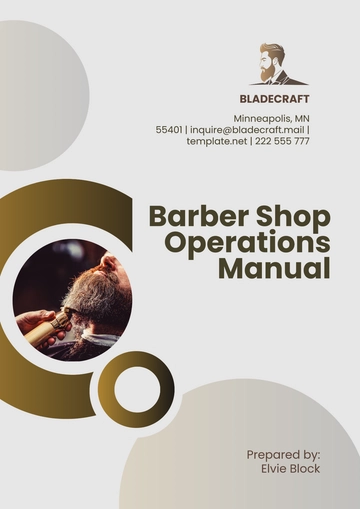Free Quality Management Manual
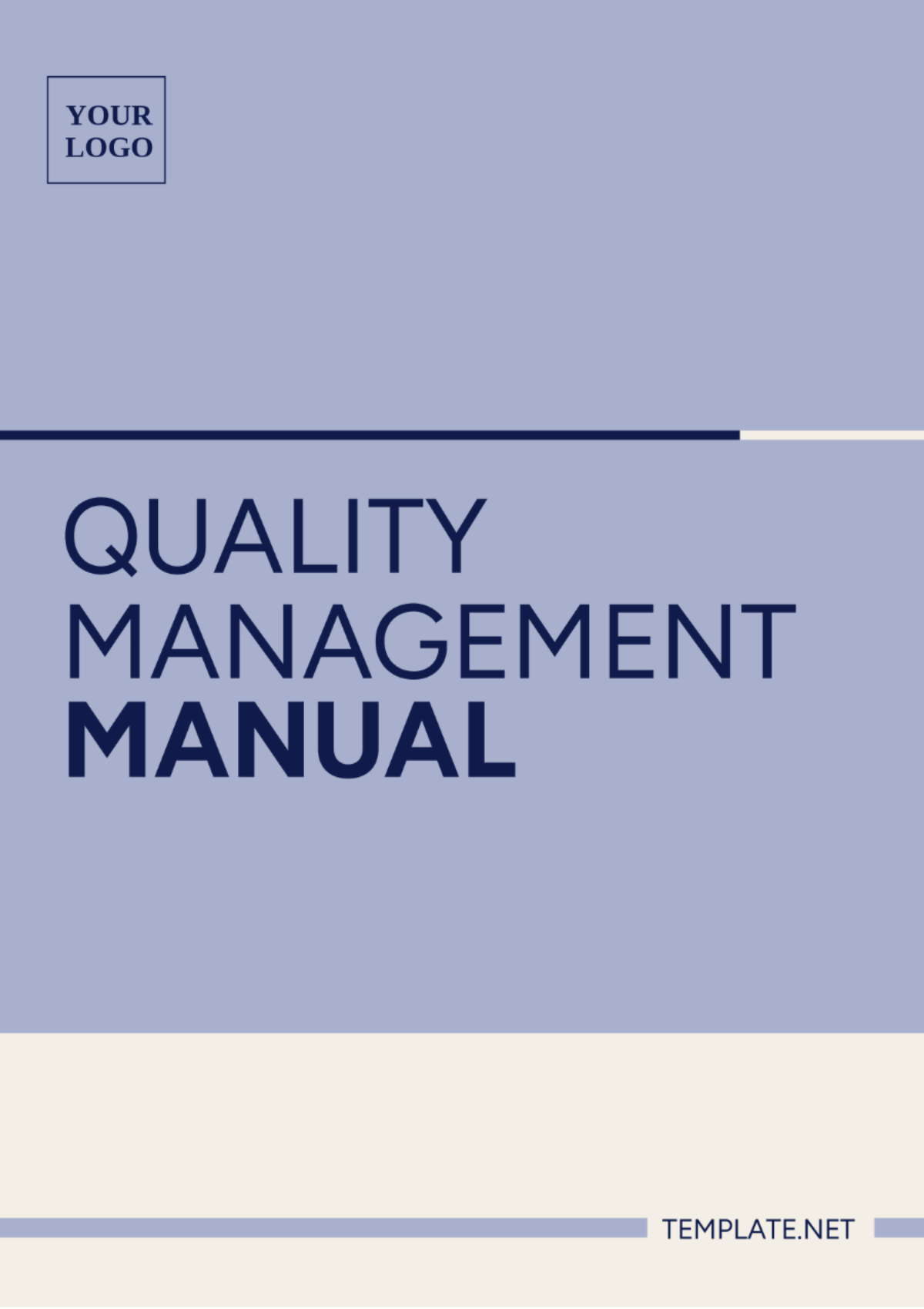
Name: | [YOUR NAME] |
|---|---|
Company: | [YOUR COMPANY NAME] |
Department: | [YOUR DEPARTMENT] |
Date: | [CURRENT DATE] |
I. Introduction
The [YOUR COMPANY NAME] Quality Management Manual outlines the fundamental principles, policies, and procedures established to ensure the consistent delivery of high-quality products and services. This manual serves as a comprehensive guide for all employees within [YOUR COMPANY NAME], providing them with the necessary framework to understand and adhere to the organization's quality management system (QMS). By following the guidelines outlined in this manual, [YOUR COMPANY NAME] aims to meet and exceed customer expectations while complying with relevant regulatory requirements.
II. Quality Policy
[YOUR COMPANY NAME] is committed to delivering products and services that meet or exceed customer expectations and regulatory requirements. To achieve this, we have established the following quality policy:
Customer Focus: We prioritize understanding and meeting the needs and expectations of our customers.
Continuous Improvement: We are dedicated to continuously improving our processes, products, and services.
Compliance: We adhere to all applicable laws, regulations, and standards related to quality management.
Employee Involvement: We encourage the active participation and contribution of all employees in quality improvement initiatives.
Effective Communication: We promote open and transparent communication channels to ensure all stakeholders are informed and engaged in quality-related matters.
III. Scope
This Quality Management Manual applies to all aspects of [YOUR COMPANY NAME]'s operations, including but not limited to:
Design and development
Production and service delivery
Supplier management
Customer satisfaction
Continuous improvement initiatives
This manual is to be followed by all employees, contractors, and stakeholders involved in activities that impact the quality of products and services offered by [YOUR COMPANY NAME].
IV. Quality Management System
The Quality Management System (QMS) of [YOUR COMPANY NAME] is designed to ensure that quality objectives are met consistently throughout all processes and functions. The key components of our QMS include:
Quality Planning: This involves establishing quality objectives, determining the processes needed to achieve them, and identifying the resources required.
Quality Control: We implement measures to monitor and verify that products and services meet specified requirements, including inspections, testing, and data analysis.
Quality Assurance: We have processes in place to ensure that quality requirements are fulfilled at every stage of the product or service lifecycle, from design to delivery.
Continuous Improvement: We promote a culture of continuous improvement by regularly reviewing performance, identifying areas for enhancement, and implementing corrective and preventive actions as necessary.
V. Document Control
Effective document control is essential for maintaining the integrity and accuracy of [YOUR COMPANY NAME]'s quality management system. All documents relevant to quality, including policies, procedures, work instructions, and records, are subject to the following controls:
Document Identification: Each document is assigned a unique identifier for easy reference and retrieval.
Document Approval: Documents are reviewed and approved by authorized personnel before issuance to ensure accuracy and compliance.
Document Distribution: Distribution of documents is controlled to ensure that employees have access to the latest version while obsolete versions are removed from circulation.
Document Revision: Whenever a document is revised, the changes are documented, and obsolete versions are archived to maintain a clear audit trail.
VI. Training and Competence
Ensuring that employees possess the necessary skills and knowledge to perform their roles effectively is vital for maintaining quality standards. [YOUR COMPANY NAME] is committed to providing comprehensive training programs to all employees, covering topics such as:
Quality policies and procedures
Product and service specifications
Process controls and best practices
Quality management tools and techniques
Training needs are identified through performance evaluations, competency assessments, and feedback mechanisms. Additionally, employees are encouraged to pursue professional development opportunities to enhance their skills and expertise in quality management.
VII. Risk Management
Identifying and managing risks is essential for maintaining the integrity of our quality management system and safeguarding the interests of [YOUR COMPANY NAME] and its stakeholders. Our approach to risk management encompasses the following steps:
Risk Identification: We systematically identify potential risks that could affect the quality of our products or services, considering internal and external factors.
Risk Assessment: Each identified risk is evaluated based on its likelihood and potential impact on quality objectives.
Risk Mitigation: Appropriate measures are implemented to mitigate or eliminate identified risks, reducing their likelihood or impact.
Monitoring and Review: Risks are continually monitored and reviewed to ensure that control measures remain effective and responsive to changes in the internal and external environment.
VIII. Supplier Management
Ensuring the quality of inputs and components sourced from external suppliers is crucial for maintaining the overall quality of [YOUR COMPANY NAME]'s products and services. Our supplier management process includes the following steps:
Supplier Selection: Suppliers are evaluated based on their ability to meet our quality requirements, including their track record, capabilities, and compliance with relevant standards.
Supplier Performance Monitoring: We regularly assess supplier performance through metrics such as on-time delivery, product quality, and responsiveness to feedback.
Supplier Development: We collaborate with suppliers to identify areas for improvement and support them in enhancing their processes and capabilities.
Supplier Audits: Periodic audits are conducted to verify compliance with quality standards and regulatory requirements and address any non-conformities promptly.
IX. Measurement and Analysis
Data-driven decision-making is integral to our quality management approach. We employ various measurement and analysis techniques to monitor performance, identify trends, and drive continuous improvement:
Key Performance Indicators (KPIs): We define and track KPIs related to quality, such as defect rates, customer satisfaction scores, and process efficiency metrics.
Statistical Process Control (SPC): We utilize SPC techniques to analyze process variability and detect deviations from established quality standards, enabling timely corrective action.
Root Cause Analysis: When quality issues arise, we conduct root cause analysis to identify the underlying factors contributing to the problem and implement effective corrective and preventive actions.
Management Review: Regular management reviews are conducted to assess the effectiveness of our quality management system, identify opportunities for improvement, and allocate resources accordingly.
X. Continual Improvement
Continuous improvement is at the heart of our quality management philosophy. We encourage all employees to actively participate in identifying opportunities for enhancement and implementing innovative solutions. Our continual improvement process includes:
Quality Audits: Internal audits are conducted regularly to evaluate compliance with quality standards, identify areas for improvement, and drive corrective actions.
Employee Suggestions: We welcome suggestions from employees for improving processes, reducing waste, and enhancing product quality, providing mechanisms for submitting and evaluating suggestions.
Benchmarking: We benchmark our performance against industry best practices and competitors to identify opportunities for improvement and establish stretch goals.
Quality Circles: Cross-functional teams are formed to address specific quality-related challenges and develop solutions collaboratively.
XI. Conclusion
The [YOUR COMPANY NAME] Quality Management Manual serves as a cornerstone for our commitment to quality excellence and continuous improvement. By adhering to the principles, policies, and procedures outlined in this manual, we strive to exceed customer expectations, comply with regulatory requirements, and achieve our organizational goals. We encourage all employees to familiarize themselves with this manual and actively participate in our collective efforts to maintain and enhance the quality of our products and services.
- 100% Customizable, free editor
- Access 1 Million+ Templates, photo’s & graphics
- Download or share as a template
- Click and replace photos, graphics, text, backgrounds
- Resize, crop, AI write & more
- Access advanced editor
Discover efficiency and excellence with Template.net's Quality Management Manual Template. Crafted to perfection, this editable and customizable template empowers you to streamline operations effortlessly. Seamlessly edit in our Ai Editor Tool for precision and adaptability. Elevate your standards with ease.
